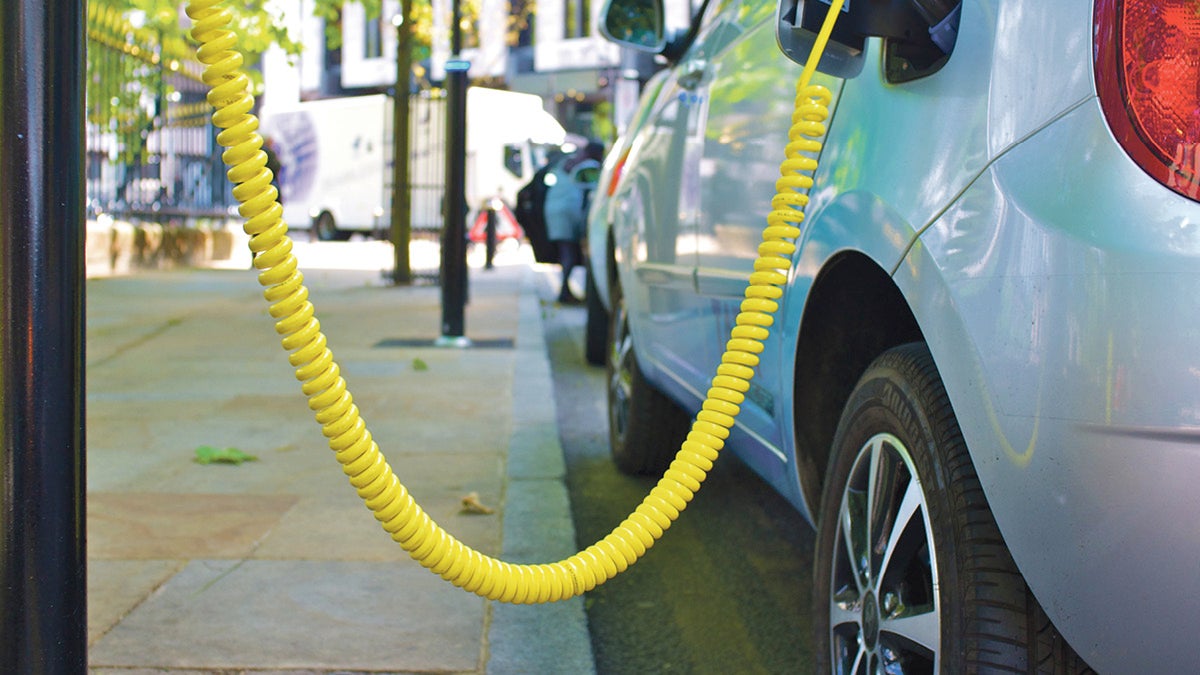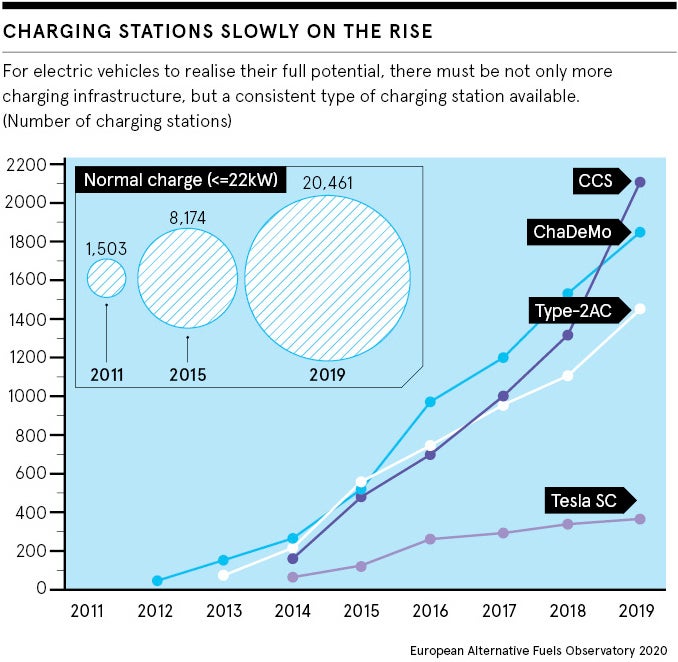
In the 2000s, when electric vehicles (EVs) first began to be taken seriously as an alternative to the internal combustion engine, range anxiety was rife. Fear of being stranded with a flat battery was stopping people from making the switch. EVs were seen as a novelty, good for a trip to the shops, but only the foolhardy would venture outside city limits in one.
Gradually, the technology improved and a network of charging points began to appear, first at service stations and more recently on urban street corners. But the UK response remained slow. Now, however, the stakes have changed.
According to Bloomberg, investment in charging infrastructure in the United States and Europe alone will top $60 billion by 2030, before rocketing to $192 billion by 2040. The UK is set to phase out the sale of new petrol and diesel cars and vans by 2030, in a bid to accelerate the transition to the EVs.
Alongside this, the government is investing £1.3 billion in a charging infrastructure that is fit for purpose, in a bid to convince UK drivers that EVs are not just a green option, but a convenient and cost effective one too.

Private charging infrastructure is miles ahead
One reason the rollout of a public charging infrastructure has been so slow is that the majority of charging is done at home, says Alexander Lewis-Jones, senior analyst at management consultants Delta-EE.
“So, while public infrastructure rollout may appear sluggish, a private infrastructure rollout has been growing rapidly across the nation’s driveways,” he says. For every public chargepoint a further five private ones have been installed, and by 2030 there could be more than three million residential chargepoints, Lewis-Jones predicts.
The public network that does exist in the UK is patchy at best. “A lot of EV operators got in early and set up their own systems,” says Bernard Magee, director of emobility infrastructure solutions at Siemens. “That’s why we have this patchwork of networks.
“But while the private sector kicked things off, there is a lot more government money now coming in to try and scale. We’re at that inflection point and the government is helping to push things along to the next stage.”
Sanjay Neogi, UK and Europe head at technology consultants the Enzen Group, says: “For a viable EV charging investment you need a lot of things to fit together: the right level of capital expenditure, favourable regulations and the potential to scale.
“Incentives will be key. Industrial policies on car charging are one option, but we also need to look at subsidising new energy vehicles and rewarding the construction of charging piles. Another promising idea is to establish a joint venture of car manufacturers, sellers and major electric power companies to fast-track EV infrastructure.”
How COVID impacted EV plans
Munich-based IONITY is creating an extensive high-power charging network across Europe. Each country has its own issues, explains managing director Dr Michael Hajesch, from regulatory frameworks, to market maturity and grid capacity. But government support is vital. “To have clear vision and targets is definitely something that helps,” he says.
The EV dream is all about making electric a superior experience to that of the combustion engine
Companies such as IONITY can also help governments achieve wider goals. By working with local suppliers, for example, they can ensure charging stations use 100 per cent renewable electricity, helping to decarbonise transport, but also achieve broader emissions targets, says Hajesch.
Coronavirus is having an influence, says André ten Bloemendal, vice president for sales in Europe at California-based ChargePoint, another company concentrating on installing fast EV chargers outside cities. “A lot of government programmes to support the economy in the COVID era push for sustainable solutions, so grants and funding are available,” he says.
“The EV dream is all about making electric a superior experience to that of the combustion engine,” says Lewis-Jones and, when it comes to convenience, inspiration should be taken from the Netherlands. Early Dutch adopters were offered the right to plug, he explains, with chargepoints installed close to their home so they could recharge overnight, without needing a driveway or garage.
Turning lampposts into charging points
It’s something that’s been taken up by Westminster City Council, which has launched Electric Avenue, in collaboration with Siemens and ubitricity. Twenty-four lampposts have been turned into EV charging points for local residents, with a further two adjoining roads due to be added to the network.
Siemens research had shown that while 36 per cent of UK motorists planned to buy a hybrid or EV as their next car, 40 per cent also said a lack of charging points stopped them from doing so sooner.
“It’s such a no-brainer,” says Magee at Siemens. “We can convert a lamppost in an hour into an EV charging point. It’s low cost, low disruption and you’re helping those people who don’t have access to off-street parking. It’s more of this type of thinking that we need: things you can scale quickly.”
With the right to plug comes the right to roam. “All Dutch public chargepoints must be accessible with any public charging card, allowing for unlimited roaming,” says Delta-EE’s Lewis-Jones. “This sounds sensible, but is not the standard across many EV markets, especially the UK’s.”
This lack of roaming, says ten Bloemendal, is holding the UK back. What is needed is an open network, where you don’t need to pay a subscription just to access a charging station, he insists.
Vehicle technology is changing too, with new models that can charge at very high power levels. Chinese EV manufacturer NIO, which is scheduled to launch in Europe in 2021, has developed a 100kWh battery with a range of more than 600km, as well as some less conventional methods of vehicle charging. These include swap shops, where drivers can exchange their flat batteries for a freshly charged one, and a valet service that sends a van with power banks to charge cars at home.
“We need to convince and provide certainty to the customer,” says IONITY’s Hajesch, “so at the end there is no reason not to go for an EV as their next choice of vehicle.”

In the 2000s, when electric vehicles (EVs) first began to be taken seriously as an alternative to the internal combustion engine, range anxiety was rife. Fear of being stranded with a flat battery was stopping people from making the switch. EVs were seen as a novelty, good for a trip to the shops, but only the foolhardy would venture outside city limits in one.
Gradually, the technology improved and a network of charging points began to appear, first at service stations and more recently on urban street corners. But the UK response remained slow. Now, however, the stakes have changed.
According to Bloomberg, investment in charging infrastructure in the United States and Europe alone will top $60 billion by 2030, before rocketing to $192 billion by 2040. The UK is set to phase out the sale of new petrol and diesel cars and vans by 2030, in a bid to accelerate the transition to the EVs.
